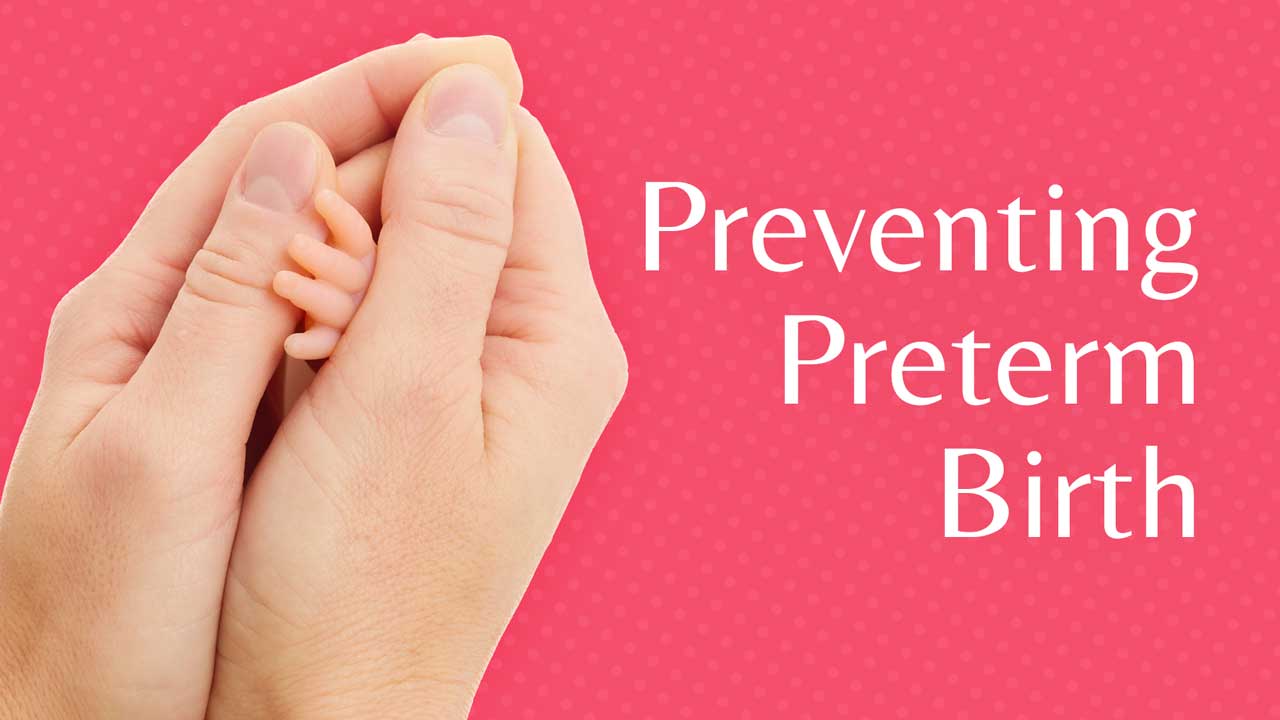Preterm birth is a major cause of neonatal death and can lead to long-term health problems such as learning disabilities, vision and hearing impairment, chronic lung disease and cerebral palsy (Furdon 2023).
In addition to the personal trauma and difficulties that preterm birth can bring to a family, it can also lead to significantly increased healthcare costs and long-term demands on many broader aspects of society (Fernandez Turienzo et al. 2016).
Even though the dangers of preterm birth are widely acknowledged, preventing premature labour continues to be a challenge (Furdon 2023).
How Common is Preterm Birth?
Preterm birth is defined as birth before 37 completed weeks of pregnancy (AIHW 2024).
With almost 1 in 10 babies born prematurely in Australia (AIHW 2024), policies that effectively reduce preterm birth, along with the associated economic, social, and personal costs, are becoming more important than ever.
Data from the Australian Institute of Health and Welfare (2024) found that in 2021:
- 8.2% of babies were born preterm, with most of these births occurring between 32 and 36 weeks gestation
- Babies whose birthing parents smoked during pregnancy were more likely to be born preterm.
Classifications of Prematurity
The following sub-categories of prematurity are based on the gestational age of the fetus:
- Extremely preterm: < 28 weeks
- Very preterm: 28 to < 32 weeks
- Early preterm: < 34 weeks.
(ALEC 2024)
All stages of prematurity are associated with adverse outcomes and both short and long-term consequences, particularly in terms of neurodevelopment (White & Newnham 2019).

Predisposing Factors to Preterm Birth
- Previous preterm birth
- Diabetes or gestational diabetes
- East African country of origin
- Obesity
- Alcohol consumption
- Smoking or exposure to passive smoke
- Low levels of vitamin D
- Lack of social support
- Stress
- Untreated depression and anxiety
- High outside temperature/heat stress
- Certain pre-existing conditions (e.g., hepatitis C, human papillomavirus, hypothyroidism, hyperthyroidism)
- Urogenital infection (e.g., chlamydia, bacterial vaginosis)
- History of certain gynecological procedures (e.g., dilatation and curettage, surgically managed miscarriage).
(ALEC 2024)
Reducing the Risk of Preterm Birth
Although preterm birth cannot be entirely prevented, many of the risk factors can be reduced with appropriate care, and all patients should be screened for potential risks.
For example, it’s well known that smoking can increase the risk of preterm delivery, so appropriate advice and support should be given from the earliest opportunity during antenatal visits. Along with smoking cessation advice, screening for lower genital tract infections, zinc supplementation, and the introduction of midwifery-led continuity of care are all interventions that are known to help reduce the incidence of premature labour (Medley et al. 2018).
The use of a cervical stitch (cerclage) is recommended only for patients who are at high risk of preterm birth and who have a singleton pregnancy (Shennan & Story 2022).
The Australian Pregnancy Care Guidelines recommend the use of 100-200 mg vaginal progesterone from 16-24 weeks’ gestation until 34-36 weeks’ gestation in pregnant patients with a short cervix between 10 and 25 mm (ALEC 2024).
The Australian Preterm Birth Prevention Alliance (2019) makes the following recommendations:
- Patients should always undergo a mid-pregnancy ultrasound scan between 16 and 24 weeks
- Pregnancies should not be ended before 39 weeks gestation unless this is required for medical or obstetric reasons
- Patients at high risk of preterm birth should seek a referral to a preterm birth specialist
- Fertility treatments such as in vitro fertilisation (IVF) and ovarian stimulation should be used with caution as they increase the likelihood of preterm birth
- People intending to get pregnant should seek pre-conception counselling
- Other risk-minimising strategies should be encouraged, for example, stabilising autoimmune conditions and controlling diabetes and hypertension.
Modifying the Risks of Preterm Birth

In cases where significant risks of preterm labour are identified, all possible steps should be taken to address modifiable risk factors. For example:
- Having adequate social and emotional support
- Quitting smoking and avoiding exposure to passive smoke
- Avoiding alcohol while pregnant
- Having tests to exclude urogenital infections
- Taking regular exercise and maintaining a healthy weight.
As Wisanskoonwong et al. (2011) suggest, providing holistic antenatal midwifery care for patients living in disadvantaged socio-economic circumstances, or who have an increased risk of preterm birth, does seem to have a positive influence and can help reduce the rate of prematurity.
For example, approaches to increasing access to antenatal care and reducing the risk of preterm birth for Aboriginal and Torres Strait Islander people that have been found beneficial include:
- Community-based collaborative antenatal care and support
- Partnership between antenatal care services, midwives, Aboriginal grandmothers and Aboriginal Health Officers.
(ALEC 2024)
Significant progress is still needed to better understand the multicausal and complex nature of premature birth. Without this understanding, creating effective research protocols becomes much harder.
Topics
References
- Australian Institute of Health and Welfare 2024, Australia's Mothers and Babies, Australian Government, viewed 16 August 2024, https://www.aihw.gov.au/reports/mothers-babies/australias-mothers-babies/contents/baby-outcomes/gestational-age
- Australian Living Evidence Collaboration 2024, Australian Pregnancy Care Guidelines, Australian Government, viewed 16 August 2024, https://app.magicapp.org/?language=en#/guideline/jm83RE
- Australian Preterm Birth Prevention Alliance 2019, How To Prevent Preterm Birth, APBPA, viewed 19 August 2024, https://pretermalliance.com.au/Mothers-to-be/How-To-Prevent-Preterm-Birth
- Fernandez Turienzo, C, Sandall, J & Peacock, J 2016, ‘Models of Antenatal Care to Reduce and Prevent Preterm Birth: A Systematic Review and Meta-Analysis’, BMJ Open, vol. 6, no. 1, viewed 16 August 2024, https://bmjopen.bmj.com/content/6/1/e009044
- Furdon, SA 2023, Prematurity, Medscape, viewed 16 August 2024, https://emedicine.medscape.com/article/975909-overview
- Medley, N, Vogel, JP, Care, A, Alfirevic, Z & Cochrane Pregnancy and Childbirth Group 2018, ‘Interventions During Pregnancy to Prevent Preterm Birth: An Overview of Cochrane Systematic Reviews’, Cochrane Database Syst Rev., vol. 2018, no. 11, viewed 19 August 2024, https://www.ncbi.nlm.nih.gov/pmc/articles/PMC6516886/
- Queensland Health 2020, Maternity and Neonatal Clinical Guideline: Preterm Labour and Birth, Queensland Government, viewed 16 August 2024, https://www.health.qld.gov.au/__data/assets/pdf_file/0019/140149/g-ptl.pdf
- raisingchildren.net.au 2023, Premature Labour, Birth and Babies, Raising Children Network, viewed 16 August 2024, https://raisingchildren.net.au/pregnancy/premature-birth/premature-labour-birth/premature-birth
- Shennan, AH & Story, L 2022, ‘Cervical Cerclage’, BJOG, vol. 129, no. 7, viewed 19 August 2024, https://obgyn.onlinelibrary.wiley.com/doi/epdf/10.1111/1471-0528.17003
- White, S & Newnham, J 2019, ‘Is it Possible to Safely Prevent Late Preterm and Early Term Births?’, Seminars in Fetal and Neonatal Medicine, vol. 24, no. 1, pp.33-36, viewed 16 August 2024, https://www.sfnmjournal.com/article/S1744-165X(18)30125-2/fulltext
 New
New 
